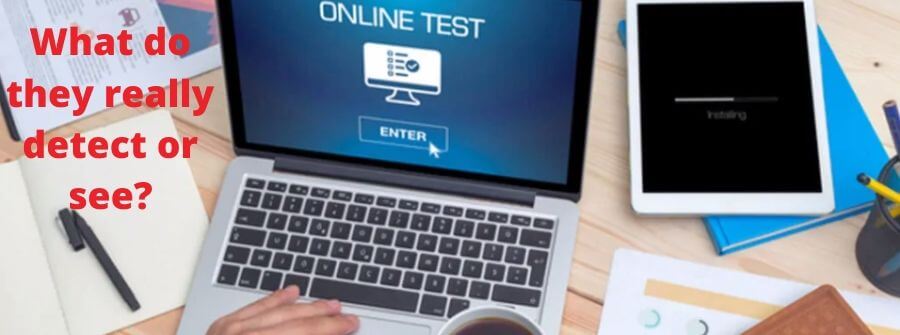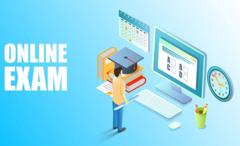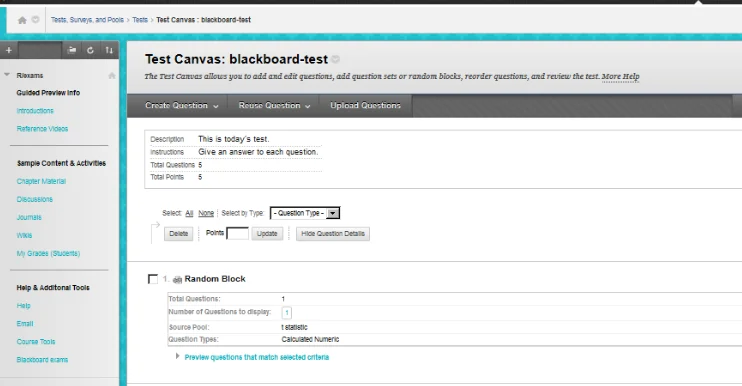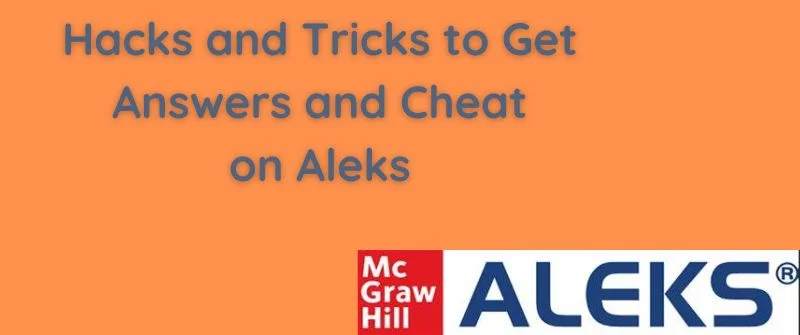Understanding How Blackboard Detects Tabs, IPs, and Copying

If you have an online test through Blackboard or any other online LMS platform, you might wonder whether they are spoofing on you.
In this post, we will explore whether Blackboard can detect cheating through open tabs, switching tabs, changing browsers, or moving to other open tabs.
But first, let us understand what online learning and testing tools are. Blackboard and Canvas are the most commonly used by educational institutions.
Blackboard and Canvas are online learning systems with tools that enable the addition of accessible students’ resources by faculties.
To enhance learning and teaching efforts, applications such as PowerPoint, video, audio, animations, and Captive are added to the online portal. Access to the portal and it content is controlled by course instructors.
Blackboard detecting Tabs
Ideally, Blackboard cannot detect if a student opened new tabs in a web browser or opened a new application or web browser during a quiz or test. However, if proctored, Blackboard will monitor and prevent students’ browser activity. In such proctoring, the general interactions with the site can be viewed by professors.
These interactions are mainly with discussion boards and files. On the site, professors can see the number of pages the student has visited and the number of times the pages were visited.
They are also provided with the general time frame spent by the student on each page. The professor can also view if the student has downloaded any file from the site.
The main purpose of all these is to enable the professor to track student participation in tests and assignments.

At the same time, Professors can see when students stop viewing quizzes on the site and potentially have viewed another page but will not show the page viewed.
Not viewing other web pages led to the emergence of products that can enable professors to do so.
These include the Repondus and the Partner Webinar, which during tests or examinations, prevent students from navigating to other tabs or accessing other browsers.
You can read about other methods of preventing online exam cheating by technical and non-technical methods.
In proctored exams, Blackboard can detect the switching of tabs through the use of a proctoring software known as Respondus monitor. If you try to switch tabs, the browser will consider this as a suspicious attempt to access answers from the web and flag you. It will return you to the original tab containing the exam questions.
At the same time, you should know that most universities use plagiarism detection software to detect if students copy and paste content. In our guide on how Blackboard detects plagiarism, we explained how this works; check it out. This will be important information if you are taking essay exams.
Can Blackboard detect Screen Sharing or Screenshots
The answer to this question is really a Yes and a No, depending on the tools the professors and your university are doing and the type of work you are doing. Let’s look at both ways in detail.
In a normal assignment environment, Blackboard cannot detect screen sharing or screenshots if a student is working on them using a normal browser. The system cannot detect what you do outside their current page. However, if proctored, Blackboard can detect and prevent screen sharing or taking of screenshots.
An online exam will need proctor software to do much detection. This is because the code that is running on normal educational systems cannot access other pages of different origins.
After all, origins define a specific sandbox where web pages live in. As an online learning portal, Blackboard can use advanced technology to detect if you have opened other pages using its page because the portal lives in its origin.

Online learning portals, however, cannot detect anything about new tabs that you open or even a new browser.
If not proctored, they cannot even detect if you take a screenshot and send it using other tabs.
Therefore, when you open other tabs with Google or other sites, online exam portals cannot see anything that you do on them. Taking screenshots, right-clicking, or copying is something that can be done too.
What Blackboard can monitor during an Exam
It is important to note that even though online exam portals do not detect you opened new tabs, the instructor can tell that you left the page. They can see that there is no interaction going on the page.
For example, they can detect that no more mouse cursor is hovering on the screen. This is very unreliable because the mouse can be outside the window while one is actually on the work provided but will show the same on the monitoring instructor.

Instructors can also detect other student activities when using online exam portals.
These activities include the number of times the student has logged in and the amount of time the student spends on the site after logging in.
Additionally, they can also know the pages that the students access and all their activity levels throughout the course.
The monitoring of activities enables the instructor to know the content each student has accessed and the ones they have not.
This depends on whether the Blackboard exam or a Canvas test is being monitored using proctoring software. For the case of this discussion, we will consider that the exam is proctored since most universities are doing this.
What professors can see during an online proctored exam depends on the proctoring type being used.
Live Online Proctoring
Audio-video and screen share feeds are monitored in real-time when the candidates are in a live proctoring test. With such proctoring, online exam portals can not only detect the switching of tabs but also block them altogether.
Recorded Proctoring
There is no proctor to monitor feed in real-time in this method. During the test, both the screen share feed and the audio video of the candidates’ test are recorded.
The instructor can then playback these records in a fast forward way and by using annotations and flag suspicious activities.
Advanced Automated Proctoring
It is the latest form of proctoring. Just like in online proctoring, during a test, the screen share feeds and the audio video are recorded.
Additionally, in this form, the feeds are monitored by the system for the detection of any suspicious activity. This is by use of video and audio analytics.
What Professors can see on Blackboard

Online exam cheating has become rampant with the development of technology.
It is this increase that has made most companies and institutions want to track and monitor student activity during tests.
This is with the intent of preventing them from cheating and using other unfair external means such as accessing other web pages, on-drive resources, pdfs, and using external devices.
This determination to curb cheating has led to the development of several websites and web pages that will help professors monitor ongoing class text. One of these is Mettl. From their Mettl accounts, professors can see the candidate’s screen and chat with them.
This enables professors to monitor the student activity from when they open the screen and start doing the work until they submit it.
In addition, Professors can view student Canvas activity and tell if you have left the page. This is if they do not see any ongoing activity on the screen.
For more efficiency in the detection of unusual activities, Mettl raises warning flags. This happens if candidates start chatting with someone in the test area if the candidate is out of frame, and if the candidate tries to access the web.
Mettl also disallows the copying of test content from the test screen by candidates. Mettl helps conduct online assessments by collaborating with the involved institutions. You can visit Mettl and learn and know more about online proctoring.
How to Take an Online Test on Blackboard
Taking a test on Blackboard depends on how it has been made available by instructors. Instructors can provide a link that you will use to access the assignment. Some provide set passwords that students should use to open the test.
Once you access the test, then you can do it. There are settings done by instructors that students need to know before starting a test.
Instructors may set; the number of attempts a student is allowed on a test, the force completion feature where students should complete the test in one sitting, a timer for the test, and the auto-submit where after the given time expires, the text will be submitted automatically.
In tests with no time limit, students can view the test and do not have to submit them. Students can select View Assessment, where they can view and add some work to the test.
The student can then save and close that panel and return to continue later. They can submit the test whenever they complete it.
In tests with limited time, students see Start Attempt instead of View Assessment. The time limit is usually displayed on the Details & Information panel. Once students select Start attempt, they must set the timer before accessing the test.
Students can cancel if they are not ready. Time limits apply to each attempt if instructors allow students to submit multiple attempts. If students start a time-limited test, it is automatically submitted when the time limit expires.
Taking the test on the online exam portals depends on how the test is presented. The test can be presented all at once. This means that the entire test is presented on one screen. This method saves time.
Other methods the test can be presented by instructors include:
- Randomized questions: In this presentation, questions are presented randomly for each test attempt. This, in some way, helps reduce cheating among students.
- One at a time: In this presentation method, one question is presented at a time. This method requires a lot of time.
- Prohibit Backtracking: In this presentation method, students cannot change the answers to questions that they have done and already submitted.
FAQs on Online Platforms Detecting your Computer
Can Edgenuity detect cheating?
Edgenuity makes sure that students don’t cheat. Instructors can proctor assessments using several embedded Edgenuity settings. This makes sure that students are doing the work themselves and are not cheating.
Read more about how Edgenuity detects cheating and how effective it is to prevent it.
With Edgenuity, instructors are also alerted when the assignments and tests reach the students. Instructors can then check the students’ work before unlocking the high-stakes assessment.
Can Sakai detect cheating?
Students using Sakai cannot be prevented from cheating because they cannot get caught. Sakai is not very protected.
Basically, what instructors can do to decrease the risk of student misbehavior is set questions randomly and set very tight time limits for work completion.
Can Blackboard view test answers?
Answers cannot be viewed on Blackboard because surveys of tests are anonymous. For essay writing questions that are open-ended, all the responses are listed. You can view several statistics on Blackboard.
In addition, you can view the grades and how they are distributed, attempts that are both in progress and need grading, and the average scores.
Does Blackboard notify when you switch tabs
Blackboard cannot directly notify when a user switches tabs because it is not enabled to do that by itself. However, some educational institutions may employ various techniques, such as the Visibility API or performance events, to infer tab switching indirectly.
However, these methods may have limitations and may not always provide accurate information.




